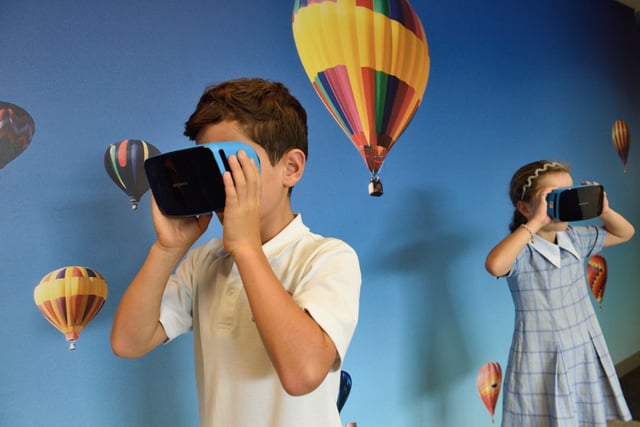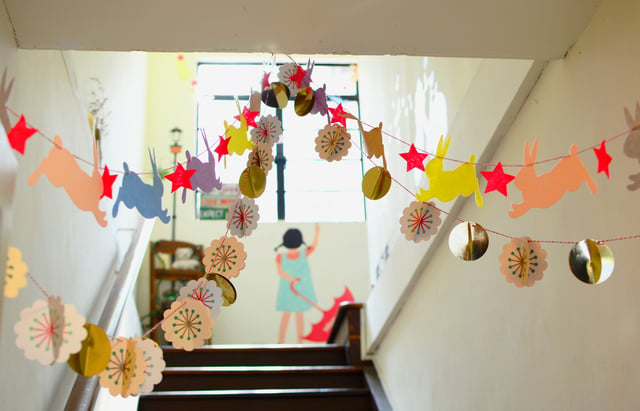How a Teacher Uses Design Thinking to Make Real-World Connections
 Written By Kristen Magyar
Written By Kristen Magyar
When I think of a fifth-grade classroom, I think of excited nine and ten-year-old students eager to share their voices, thoughts, and ideas. Sometimes they just want to talk, and that is okay if we can engage them in a productive learning process. In order to make real-world connections for my fifth graders, I transformed the design thinking process with NEW toy creation to be shared in a Shark Tank and Toy Box TV competition during a two-month project.
What is Design Thinking?
Design thinking is a methodology to provide solution-based problem solving. Imagine wanting to create a new hula hoop for a five-year-old. What would you need to think about? What is the body size of a five-year-old? Do they really need a large adultlike hula hoop? How heavy should the material be? Will the material break easily from tugging on it with older siblings? Those are all things you would consider in the design thinking process when creating a new hula hoop.
What Are the Steps of the Design Thinking Process?
Empathize- You have to truly understand the problem you are trying to solve. You may consult experts, do background research, and pose questions.
Define- You take your information and findings and look at the results, make observations, and identify features to work on during the process.
Ideate- You must put all ideas together, identify the problem, and begin working toward a solution.
Prototype- You create a scaled down three-dimensional model from inexpensive resources, like paper and recycled materials, as a version of a possible solution to the problem.
Test- You show all of the possible solutions created during the prototype stage. Can you combine prototypes for the best solution?
The design thinking process is flexible and can be adapted to fit with many problem-based activities in your classroom. It provides opportunities for 5Cs integration with collaboration, communication, creativity, critical thinking, and computational thinking skills that foster learning. Not all students learn in the same way, and this process allows teachers to reach more learning styles through the process.
How I Use Design Thinking in My Classroom
Thinking back to my fifth-grade class and the memorable experiences we had, I loved a good Jeopardy Review Game. I know that my students are not sitting down and watching Alex Trebek like I was, however. They are watching Primetime TV shows such as Toy Box or Shark Tank.
I try to keep STREAM lessons current with likes and trends in my class, and two years ago, I changed it up and created a Toy Box inspired Toy Creation unit. People may not know what fabulous things happen in my downstairs lab at Highland Falls Intermediate School with Grades 3- 6, and it was time we shared our voices and thoughts.
Applying the Design Thinking Process with Toy Creation
Empathize, Define, and Ideate: The Toy Creation unit began with the history of toys lesson looking at the change from a top to a Beyblade. The second I said Beyblade my boys were ready for the challenge. We also spoke of needs and wants of toys, what we already have, and what we could do if we had a better toy. This sparked their creativity and changed my students thinking of new toys they could possibly invent.
Prototype and Test: The students then designed a toy using three views in Google Drawing and created a three-dimensional model using Doodle 3D, which turns their flat image into a three-dimensional paper model rendering.
In the first year, this process led students to opening the brown wooden treasure cabinet and grabbing modeling materials to design a prototype that was presented to the judges. In the second year, I transformed the prototyping to full three-dimensional rendering by creating STL files that students sent directly to the 3D printer.
Making the Pitch, Connections, and Meaning
After prototyping both years, students created infographics for their marketing campaigns. The students developed ideas using more graphics and less words, which was hard for the students who wanted to talk and have lots to say about everything. This challenged my students to really pick the main ideas and provide a quick gist of their message so they could truly sell to the Toy Box Judges.
We then transformed our learning lab for the culminating activity, which brings young entrepreneurs ready to pitch their ideas to a panel of judges from around the district. The students had to persuade them by presenting their visions and three-dimensional models and explaining why their toy is the best and should receive the award.
Students presented a speech, which they wrote and typed in Google Docs, to their judges and peers about their products and how they executed their ideas during the design process. Students practiced public speaking skills and answered questions from the judges to clarify their ideas.
As the competition continued, the students edited their speeches to satisfy the questions and details the judges were looking for. The students wanted to and needed to IMPROVE their design, after speaking with peers about ideas, and they achieved the sixth step of the design thinking process: improve. The projects are finally judged, and top awards are given for a variety of Toy Award Categories.
The Toy Box judges also shared their favorite childhood toys and had a chance to get nostalgic with their childhood treasures. The students loved learning something personal that wouldn’t normally have been a topic of discussion from the judges. Students want to make real connections and learn about their Teachers, Custodians, and Administration.
This project has made us all want to go out and develop a Toy and pitch it to the Toy Box judges. The students were eager to hear the results from the judges’ deliberations and the excitement and support for all inventors was respectful and displayed in the positivity of ALL participants.
Staying Motivated with Student Engagement
Living in the Northeast we experience snow days that keep us home, but my students jumped online and worked on their toy projects to keep the momentum going. Due to snow days both years, Toy Box judging was moved, and this didn’t stop the students from asking questions, refining their projects, and preparing even better presentations with the snow days benefiting their work.
This is now one of the most memorable experiences for STREAM students at HFIS. The younger students watch the process and see prototypes being printed. This helps connect our community of learners and increases public speaking skills with accountable talk during all presentations.
I hope you will also jump outside the box and engage your students by innovating and modifying learning with real-world connections by transforming the design thinking process.
For more teaching strategies, download these classroom-ready lesson plans and peruse this library of on-demand webinars for educators.




